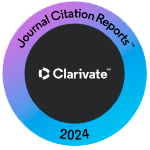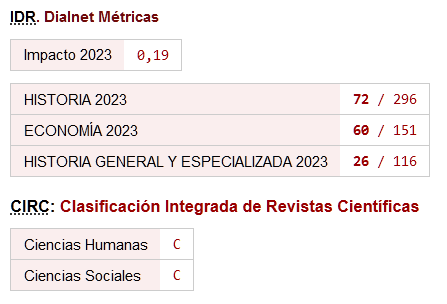Expropriation of church properties in Colombia. The accounting of the Agencia General de Bienes Desamortizados (1861 -1888)
DOI:
https://doi.org/10.26784/issn.1886-1881.v7i12.277Keywords:
Colombia, 19th Century, Expropriation, Accounting History, Governmental AccountingAbstract
The expropriation of Church properties that started in Spain and France during the Enlightenment also took place in Latin America. It showed there different phases and nuances in the mid-nineteenth century and was a process with significant implications for the evolution and nature of some Colombian's political and economic institutions.
For three decades, from 1861 to 1888, properties and rights of the Catholic church and other corporations were expropriated and transferred to private people and also occasionally to the new State. It was weighed down by financial difficulties resulting from the public debt, the precarious fiscal organization and the scarce regional development.
The expropriation was established by a presidential decree under the second mandate of General Tomás Cipriano de Mosquera. It involved the need to create an organism entrusted with the implementation of the adopted measures. During the high period the expropriation this function was performed by the Agencia General de Bienes Desamortizados. When the decline came the task was passed to the Secretaría del Tesoro (Treasury Department).
The accounting of the expropriation process was to be kept by double entry with the Journal and Ledger containing all details of the operations, such us a rigorous explanation of the items, the corresponding dates, etc.
The implementation of this accounting method was meticulously ruled by a series of regulations setting the administrative procedures to draw up the inventory, to value the assets, to carry out the auctions and to process the claims with the pertinent written support.
This paper aims to describe the accounting system kept to record the expropriation of the Church territories on the basis of primary and secondary sources. The subject will be studied together with other historical events, which form the context within which functioned governmental accounting in Colombia and Latin America.
Downloads
References
Bauer, A. (1983) "The church in the economy of Spanish America: censos and dépositos in the Eighteenth and Nineteenth Centuries", The Hispanic American Historical Review, 63, (4), 707-733. https://doi.org/10.1215/00182168-63.4.707
Borda, Francisco de Paula. (1974): Conversaciones con mis hijos. Bogotá: Talleres Gráficos Banco Popular.
Colmenares, G. (1980): Cali: Terratenientes, mineros y comerciantes, siglo XVIII. Bogotá: Carlos Valencia Editores.
Cortés, J. (2004) "Desafuero eclesiástico, desamortización y tolerancia de cultos: una aproximación comparativa a las reformas liberales mexicana y colombiana de mediados del siglo XIX", Fronteras de la Historia, 9, 91-163. https://doi.org/10.22380/20274688.606
Deas, M. (1980) "Los problemas fiscales de Colombia durante el siglo XIX", Ensayos sobre historia económica de Colombia, 143-172, Fedesarrollo.
Del Castillo, L. (2006) ""Prefiriendo siempre a los agrimensores científicos". Discriminación en la medición y el reparto de resguardos indígenas en el altiplano cundiboyacense, 1821-1854", Historia Crítica, 32, 68- 93. https://doi.org/10.7440/histcrit32.2006.03
Díaz, F. (1977): La desamortización de los bienes eclesiásticos en Boyacá, Tunja: Universidad Pedagógica y Tecnológica de Colombia.
Díaz, F. (1978) "Estado, Iglesia y desamortización", Manual de Historia de Colombia, 413-465, Instituto Colombiano de Cultura.
Fazio, A. y Sánchez, F. (2008): "The educational effects of 19th Century disentailment of Catholic Church land in Colombia", Documentos CEDE, (6).
https://doi.org/10.2139/ssrn.1479832
Galindo, A. (1874): Historia económica i estadística de la hacienda nacional. Bogotá: Imprenta Nacional.
González, Fernán. (1987) "Iglesia y Estado desde la convención de Rionegro hasta el Olimpo Radical. 1863- 1878", Anuario Colombiano de Historia Social y de la Cultura , 15, (1), 91-163.
González, Florentino. (1981): Escritos políticos, jurídicos y económicos, Bogotá: Instituto Colombiano de Cultura.
González, Narciso. (1857): Manual de cuentas o exposición razonada de las reglas de interés, descuento y otras operaciones de giro , Bogotá: Imprenta del Neo-granadino.
Hyland, R. (1982): "A fragile prosperity: credit and agrarian structure in the Cauca Valley, Colombia, 1851- 87", Hispanic American Historical Review, 62, (3), 369-406.
https://doi.org/10.1215/00182168-62.3.369
Jaramillo, R. y Meisel A. (2008) "Más allá de la retórica de la reacción, análisis económico de la desamortización en Colombia, 1861-1888", Cuadernos de Historia Económica y Empresarial, Banco de la República. https://doi.org/10.32468/chee.22
Kalmanovitz, S. (2003): Economía y Nación. Una breve historia de Colombia, Bogota: Editorial Norma.
Knowlton, R. (1977) "Expropiación de los bienes de la Iglesia en el siglo XIX en México y Colombia: Una comparación", El siglo XIX en Colombia visto por historiadores Norteamericanos, 29-56, Editorial la Carretera.
Laribee, S., Laribee, J. and Hogan, S. (1994) "Government accounting for Colombia's customhouses during Nineteenth-Century", Accounting, Business and Financial History, 4, (1), 99-118. https://doi.org/10.1080/09585209400000039
Laverde, I. (1895): "Bibliografía Colombiana", Recurso electrónico. Biblioteca Luís Ángel Arango. http://www.lablaa.org/blaavirtual/bibliografias/bicol/bicol/bicol11.htm
Liévano Aguirre, I. (1987): El proceso de Mosquera ante el Senado, Bogotá: Tercer Mundo Editores, Tercera Edición.
Liévano Aguirre, I. (2002): Rafael Núñez, Bogotá: Intermedio Editores.
Luque, E. (2005) "Libertad eclesial y separación Iglesia-Estado en Colombia", Boletín de Historia y Antigüedades, XCII, (828), 23-43.
McGreevy, W. (1975): Historia económica de Colombia. 1845-1930, Bogotá: Tercer Mundo Editores.
Ocampo, J. (1998): Colombia y la economía mundial. 1830-1910, Bogotá: Tercer Mundo Editores, Segunda Edición.
Oficina de Investigaciones Socioeconómicas y Legales. (1975): La acción del Estado en Colombia y sus beneficiarios. 1820-1931, Bogotá: Informe Final, Ofisel.
Ospina Vásquez, L. (1955): Industria y protección en Colombia 1810-1930, Bogotá: Editorial Santafé.
Pulgarín, H. y Cano, J. (2000): "Historia de la contabilidad pública en Colombia", Revista Contaduría, 37, 87- 125.
Restrepo, J. (1885): "La Iglesia y el Estado en Colombia", Recurso electrónico. Biblioteca Luís Ángel Arango. http://www.lablaa.org/blaavirtual/historia/igesc/indice.htm
Salazar, M. (1948): Proceso histórico de la propiedad en Colombia, Bogotá: Editorial ABC.
Sierra, E. (2008): "Contabilidad Gubernamental", Programa de Administración Pública Territorial, Escuela Superior de Administración Pública. ESAP.
Sowell, D. (1987): ""La teoría y la realidad": The democratic society of artisans of Bogotá, 1847-1854", Hispanic American Historical Review, 67, (4), 611-630.
https://doi.org/10.1215/00182168-67.4.611
Tirado, A. (1971): Introducción a la historia económica de Colombia, Bogotá: Universidad Nacional de Colombia, Segunda Edición.
Villegas, J. (1981): Colombia: Enfrentamiento Iglesia - Estado 1819-1887, Bogotá: La Carreta Editores.
Downloads
Published
How to Cite
Issue
Section
License

This work is licensed under a Creative Commons Attribution-NonCommercial-ShareAlike 4.0 International License.










